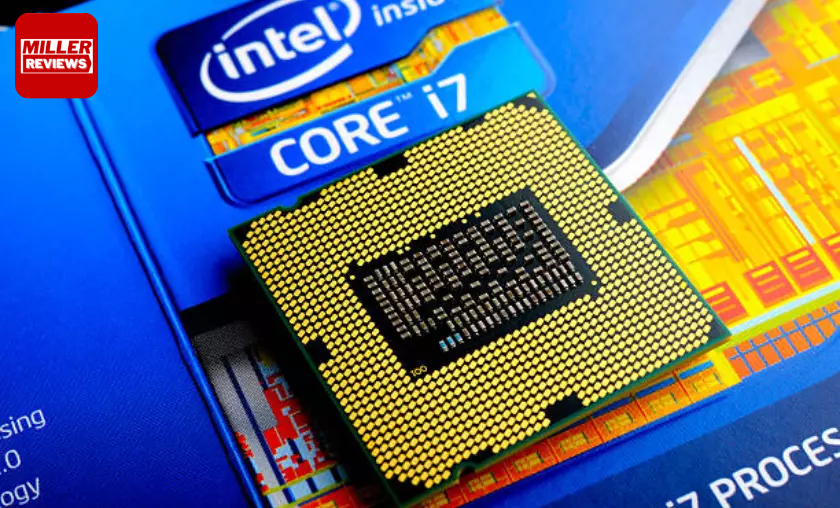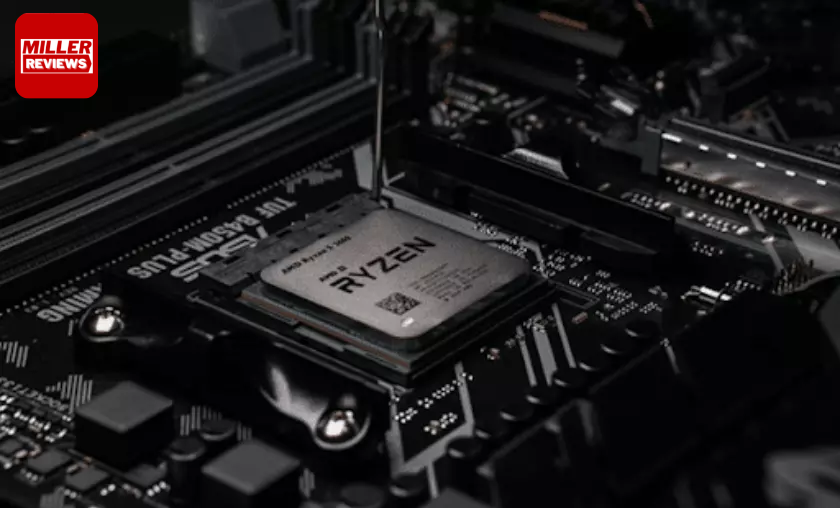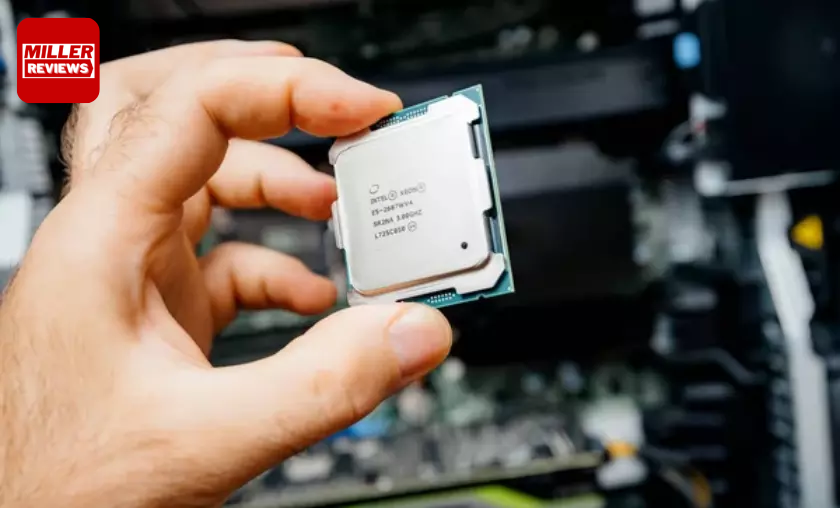Whether you’re seeking top-notch gaming performance, robust database hosting, or reliable dedicated server hosting, it’s crucial to understand the intense CPU rivalry between these industry titans and the ongoing AMD vs. Intel battle that has intensified in recent years.
While Intel’s processors have traditionally held the edge in single-core raw power, AMD CPUs have made remarkable strides in core count and threads, ultimately surpassing their competition in multi-core performance and garnering significant sales.

Only three or four years ago, AMD’s marketing team faced challenges in achieving the same level of exposure as Intel. However, they smartly pivoted their strategy by targeting PC gamers and revamping their packaging with distinct color schemes. This shift led to the game-changing release of their Ryzen series.
With processors becoming increasingly similar in performance, it becomes imperative to determine which one is best suited for your needs. Historically, AMD processors have offered more excellent value, while Intel enjoys a more robust brand recognition akin to the “Nike of microprocessors.”

The ongoing AMD vs. Intel battle revolves around market share and developing different technologies to gain an advantage. For instance, Intel employs LGA1200 sockets for their processors, while Ryzen chips rely on AM4 sockets, necessitating compatible component choices like motherboards.
Thankfully, AMD and Intel provide various CPUs catering to diverse applications.
Table of Contents
Intel vs AMD Processors
Consumer vs Enterprise CPUs
Not all CPUs are created equal. The CPUs integrated into your server are engineered explicitly for sustained workloads, capable of running at maximum capacity around the clock. On the other hand, desktop processors are not designed to handle such high demands. Consequently, server CPUs are slightly pricier than their desktop counterparts but deliver superior product performance.

Furthermore, most desktop processors cannot handle server-specific functions like error-correcting codes and registered memory. The most significant disparity between the two lies in that server CPUs typically boasts higher core counts than desktop PCs. This disparity in core count results in higher power consumption since server workloads generally are much more multi-threaded than most desktop workloads, owing to the additional cores.

For years, Intel processors have held unrivaled dominance in this realm. However, AMD’s Ryzen Threadripper has significantly disrupted the landscape since its introduction. Traditionally, AMD must clearly distinguish between its server processors and the desktop space. The AMD CPUs utilized in servers are consumer-grade chips that possess remarkable power, making them exceptionally suitable for server applications (in 2017, AMD introduced their dedicated Epyc line, tailored explicitly for servers). In contrast, Intel has consistently offered a dedicated line of processors designed specifically for servers.
Intel vs AMD Processors Explained
Like any brand, AMD and Intel assign names to each model or series of their processors. AMD presents its Ryzen processors, including Ryzen 3, Ryzen 5, Ryzen 7, Ryzen 9, and the Epyc line. On the other hand, Intel offers the Silver, Gold, and Platinum lines as part of their Xeon brand.

AMD has always been a strong contender in the processor market, and its Ryzen series has only enhanced its reputation. The latest lineup, comprising AMD Ryzen 3, 5, 7, and 9 chips, delivers commendable multi-core performance at an affordable price point.
In Q2 of 2021, Intel introduced the 3rd generation scalable processors, specifically the Xeon E-2300 series, offering ten new processor options with 4, 6, or 8 cores.
AMD’s Ryzen 3000 CPUs represent a significant leap forward from the previous Ryzen 1000 and 2000 series. With the revamped Zen 2 architecture, AMD achieved incremental improvements and made substantial strides. The Ryzen 3000 CPUs garnered such high demand that maintaining stock levels became challenging.
While AMD has already transitioned to more advanced 10nm and 7nm architectures, Intel surprised many industry observers by opting to continue with the 14-nanometer architecture.

Consider the AMD Ryzen 5800X chip, which strikes an excellent balance between price and remarkable performance improvements compared to the previous generation. It is widely regarded as one of the best processors currently available. Additionally, AMD’s utilization of the AM4 CPU socket across multiple generations ensures backward and forward compatibility, providing users with significant value. In contrast, Intel has a history of releasing new processors incompatible with older socket types.
AMD’s commitment to the AM4 socket has greatly benefited users regarding future upgradability. For instance, if you were using a 3900 chip on an Asrock motherboard, upgrading to the new series is as simple as downloading a BIOS update for your board. However, the chances of taking an old Intel chip and using it in a newer motherboard, or vice versa, are slim on Intel’s side.
Moreover, Intel offers dual chipsets in many of their processor lines, whereas AMD only recently ventured into this territory with the release of their server-specific Epyc line.
Intel vs AMD Performance Comparison
A few years back, AMD made a strategic shift, strongly emphasizing gaming performance to challenge Intel’s market dominance. This led to the release of their 3000 series processors, showcasing a significant workload capacity increase.
Take the AMD Ryzen 3900X, for instance. This impressive chip boasts 12 cores, 24 threads, a base clock speed of 3.8GHz, a boost clock of up to 4.6GHz, and a thermal power design (TPD) of 105W. Similarly, AMD’s top-tier server processor, the Ryzen 3950X, offers a whopping 16 cores, 32 threads, a base clock speed of 3.5GHz, a maximum turbo boost of 4.7GHz, and a TPD of 105W. These chips are absolute powerhouses, ideal for high-end gaming and multimedia editing.

At first glance, the Intel Xeon E5-2695 v2 needs to improve in comparison. It comes with 12 cores, 24 threads, a base clock of 2.4GHz, and a maximum boost of 3.2GHz. Additionally, the price is notably lower than that of the Ryzen 3950X, which might make it seem less robust.
However, the intriguing aspect of the E5-2695 v2 lies in its cost-effectiveness and dual chipset capability. Considering these factors, it becomes a strong contender while maintaining a considerably lower price than the Ryzen 3950X.
For multi-core server workloads, both AMD and Intel CPUs offer excellent performance at affordable prices, making them well-suited for high-end gaming, demanding creative tasks like 4K video editing or resource-intensive processes such as 3D rendering.
On the AMD side, the Ryzen Threadripper 3990X stands in a league of its own. With a staggering 64 cores, 128 threads, a base clock speed of 2.9GHz, a boost speed of up to 4.3GHz, and a TPD of 290W, this processor boasts exceptional clock speeds and unrivaled multi-threaded performance. It is a versatile workhorse, suitable for various applications, including VPN, large-scale data computations, AI, and military uses.
Compared to Intel, the Xeon Silver 4214R aligns with the Ryzen 3900X, offering 12 cores and 24 threads. However, its clock speed is lower, with a base of 2.4GHz and a maximum boost of 3.5GHz. The TPD is rated at 100W.
Although the Intel E5 2620 V4 matches AMD in core count, providing 16 cores, it needs to catch up in clock speed. With a base speed of 2.1GHz and a boost reaching up to 3.0GHz, it exhibits a TPD of 85W.
Comparing anything to the Ryzen Threadripper is a challenge, but the Intel Xeon E5-2699 v4 scalable processor holds up impressively. This chip offers unique performance capabilities with 22 cores and 44 threads, a base clock speed of 2.2GHz, with a maximum boost of 3.6GHz.
Overclocking Headroom
Regarding overclocking headroom, Intel processors have consistently been known for offering more significant potential. This translates to improved performance beyond the baseline speed, surpassing what AMD Ryzen CPUs have traditionally provided. However, it’s essential to factor in the stability of your CPU when pushing clock speeds to their limits. Here’s a comparison of some popular Intel models that rival AMD’s Ryzen 9 line:
| CPU Processor | Base Frequency | Max. Turbo Frequency |
|---|---|---|
| AMD Ryzen 3900X | 3.8 GHz | 4.6 GHz |
| Xeon Silver 4214R | 2.4 GHz | 3.5 GHz |
| AMD Ryzen 3950X | 3.5 GHz | 4.7 GHz |
| E5 2690 v4 | 2.6 GHz | 3.5 GHz |
| AMD Ryzen 3990X | 2.9 GHz | 4.3 GHz |
| Xeon Gold 6338 | 2.0 GHz | 3.2 GHz |
Please note that these comparisons are provided for your consideration.
AMD Ryzen vs Intel Xeon

In server demand, AMD Ryzen Servers have become quite the hot commodity. Their popularity has surged, causing vendors to need help maintaining sufficient stock levels to meet the soaring demands. These servers often fly off the shelves before reaching the data centers. This issue holds particularly true for us at ServerMania. AMD must catch up with the overwhelming demand, as many individuals are reselling or hoarding the coveted 3900s for cryptocurrency purposes. Consequently, the scarcity of hardware has emerged as a pressing concern for AMD, whereas Intel’s extensive experience has granted them a more dependable supply chain.
One processor that has garnered immense favor among enterprise customers is the mighty AMD Ryzen Threadripper 3990X. This beast of a CPU boasts an astounding 64 cores and 128 threads, delivering remarkable power and speed. As a result, it reigns as the unrivaled champion of processors regarding product performance. Moreover, it is an affordable option that utilizes the Zen 2 microarchitecture and is fabricated using TSMC’s cutting-edge 7 nm process. Additionally, it supports a staggering 64 PCIe lanes at 4.0.

For those seeking a comparable alternative, the Xeon 6338 Gold Series processor stands as a worthy contender. Its impressive features include 32 powerful cores, 64 threads, a base clock speed of 2.0 GHz, and a maximum turbo frequency of 3.2 GHz. Built on the X86 architecture, this highly sophisticated processor caters to an expanding array of complex applications. Much like the 3990X, it also supports 64 PCIe lanes at 4.0.
It is worth noting that Intel chips come equipped with an integrated graphics card, unlike their AMD counterparts.
Epyc Considerations
No battle for supremacy can be fought without acknowledging the mighty AMD Epyc Series. Making its debut two months ahead of the 3950, AMD’s EPYC 7402P takes the stage as a 64-bit tetracosa-core x86 server microprocessor, boasting 24 cores and 48 threads. With a base clock speed of 2.8GHz and a maximum speed of 3.35GHz, this powerhouse carries a power rating of 180W. It’s worth noting that this processor exclusively supports single-socket configurations while offering the capability to handle up to 4 TiB of eight channels DDR4-3200 memory per socket. The Epyc 7402P belongs to the illustrious EPYC series and is built on the Rome 7nm family.
Engineered to excel in memory bandwidth, capacity, and exceptional I/O performance, this formidable server processor is tailor-made for demanding computational tasks. Its unrivaled attributes make it a perfect fit for intensive applications such as artificial intelligence (AI) and high-performance computing, particularly in industrial or military settings. The Epyc 7402P embodies sheer power and capability within the EPYC series, ready to easily tackle the most complex challenges.
Price Comparison
While AMD is considered the more budget-friendly option, Intel is fully committed to countering AMD’s rising competitiveness by bolstering its processors with additional cores, threads, and power. Intel’s new processors do not come with a price increase compared to their AMD counterparts, resulting in a superior price-per-core and price-per-thread ratio. In response to this challenge, AMD has adjusted its prices and elevated the level of competition.
| Processor | Cores | Price Range |
|---|---|---|
| AMD Ryzen 9 | 16 | $600 – $800 |
| Intel 2699 E4 | – | $4000 |
| Intel Xeon E5 2690 | 14 | Around $2000 |
It’s worth noting that the Ryzen line only supports dual CPU formats once you reach the Epyc series, which comes at a higher price point of around $4000 to $5000 per chip. Additionally, if you decide to go with AMD, it is important to know that you will need to separately purchase a dedicated graphics card, as it is not integrated into the Ryzen processors.
Which is the Best CPU?
This comprehensive article delves into the endless debate of comparing AMD versus Intel and determining which corporation reigns supreme in CPU architecture. However, the ultimate verdict depends on your requirements and preferences regarding AMD versus Intel.
Regarding CPU performance, the disparity between AMD and Intel is insignificant, especially considering the particular product lines you opt for. The most notable distinction lies in the price, with Intel often commanding a higher cost than AMD.
If you prioritize a high core count within the upper echelon of processors, AMD CPUs hold a clear advantage. They offer more cores and threads, delivering an exceptional price-to-performance ratio that ensures you get the most value for your dollar.
Conversely, Intel distinguishes itself by allowing dual CPUs on the motherboard chipset. For instance, the Xeon E5-2695 v2 offers a superior price-to-performance ratio.
We understand that conducting thorough research can be time-consuming, and the abundance of online information can be overwhelming. We highly recommend scheduling an accessible server hosting consultation with our experts. They will provide tailored answers to your questions about server hosting without any obligations or costs.
Furthermore, if you require additional assistance in choosing between AMD’s Ryzen processors and Intel’s Core series, both of which offer similar features but come with different price tags, or if you need guidance in selecting the ideal processor for your unique needs, we invite you to explore our range of Intel and AMD Dedicated Server Options. Our offerings will provide valuable insights to make informed decisions that suit your requirements.
Conclusion
The battle between Intel and AMD processors has ignited the ultimate showdown in computing. Both companies have delivered robust solutions that cater to different needs, from consumer to enterprise CPUs. In this article, we explored the critical aspects of this rivalry, including the performance comparison, overclocking headroom, and considerations of AMD Ryzen and Intel Xeon.
Additionally, we delved into the Epyc considerations and analyzed the price comparison between the two giants. Ultimately, determining the best CPU depends on individual requirements, with Intel and AMD offering unique strengths and capabilities. Whether you seek cutting-edge performance or cost-effectiveness, this showdown has showcased the incredible advancements in processor technology, providing users with various options to meet their specific needs.
For More amazing articles related to Tech Check out our website Over Here
To Read more similar articles click here
Thanks for visiting our Website. If you appreciate our work, kindly show us some support in our comments section 🙂